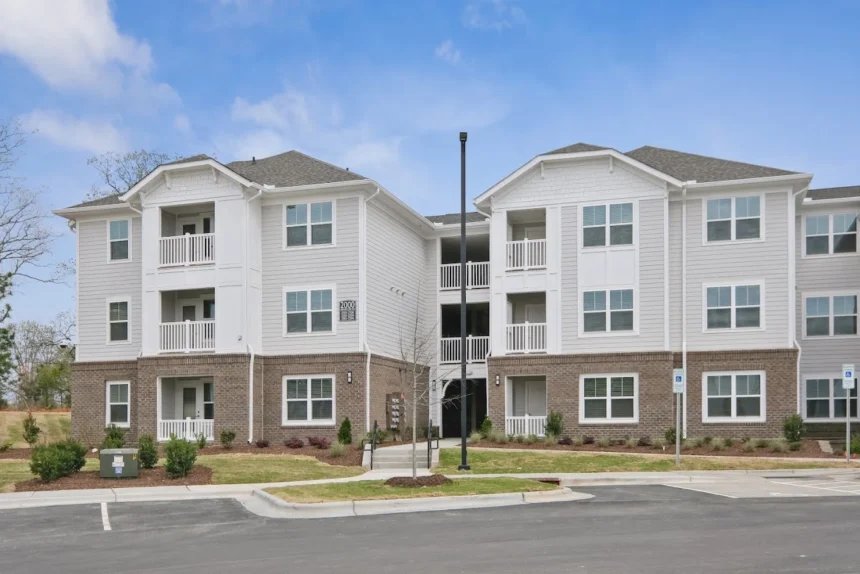Introduction: A Tale of Two Real Estate Markets
Urban landscapes are evolving at a rapid pace. Cities across the globe are witnessing a significant surge in commercial office developments, reflecting growing economic activity and a return to in-person work.
In Chennai, for example, office space leasing increased by 57% in the first half of 2025 (Times of India). At the same time, the affordable housing sector is facing mounting pressure, with rising rents and limited availability leaving many residents struggling to secure suitable apartments.
The juxtaposition of these two trends raises an important question: is the boom in commercial offices putting the future of affordable apartments at risk?
The demand for commercial office space has grown alongside the expansion of multinational companies and tech firms that require modern, flexible workspaces.
In cities like Shenzhen, Shanghai, and Beijing, developers are offering innovative incentives such as rent reductions and flexible lease terms to attract tenants (Reuters).
This rise in demand contributes to economic growth, creating high-value jobs that, in theory, should support residential development. Yet, paradoxically, the growth in offices is often accompanied by rising residential property prices, particularly for apartments in urban centers, leaving low- and middle-income residents priced out.
The Commercial Office Resurgence
The recent office boom is not limited to Asia. In cities across the United States, commercial real estate markets are recovering from pandemic-era lows.
Developers are capitalizing on the return-to-office movement and the ongoing expansion of tech and finance sectors. This influx of commercial investment often benefits urban economies, driving infrastructure improvements, public amenities, and new residential developments targeted at higher-income earners.
However, the ripple effects on housing affordability cannot be ignored. As commercial rents soar and prime locations become saturated with office buildings, land that could have been allocated to apartments is increasingly diverted to commercial projects, intensifying the competition for urban space.
In Chennai, for example, the absorption of over five million square feet of office space has coincided with a sharp rise in residential rents in adjacent neighborhoods.
Similarly, in cities like New York, affordable apartment construction struggles to keep pace with growing demand, despite government-backed initiatives like the $270 million East New York housing project (Reuters).
The economic benefits of office booms often do not trickle down to those most in need of affordable apartments, creating a widening gap between commercial growth and residential accessibility.
The Affordable Housing Challenge
Affordable housing shortages have long been a challenge in urban centers, but the current environment exacerbates the problem.
Rising rents, coupled with limited availability, leave many residents struggling to find apartments that match their income levels. In many cities, gentrification is a significant factor, as corporate investment and urban revitalization push up property values and rents.
Atlanta provides a stark example, where over 40% of single-family homes have been purchased by corporate investors, displacing long-time residents and reshaping neighborhood demographics (Wikipedia).
The consequences are profound. Affordable apartments are not just about providing shelter; they serve as the backbone of community stability and diversity.
Without them, low- and middle-income residents are forced to move further from city centers, often losing access to jobs, schools, and public services. In turn, this can perpetuate cycles of inequality, even in thriving urban economies.
The tension between commercial office growth and housing affordability is therefore more than an economic question it is a social issue with long-term implications.
Potential Solutions: Office-to-Apartment Conversions
One promising approach to alleviating housing shortages is the adaptive reuse of commercial office buildings. Converting vacant or underused office spaces into apartments offers a relatively fast and cost-effective way to increase the housing stock.
In cities such as Chicago, developers have already begun implementing large-scale conversions, transforming empty offices into residential units that meet modern living standards (New York Post).
Despite its potential, office-to-apartment conversion is not without challenges. Commercial buildings are typically designed for business operations rather than residential comfort.
Developers often face the task of restructuring floor layouts, enhancing ventilation, and adding windows to meet residential codes and ensure livability (Fast Company).
Financing and regulatory approval can also be hurdles, particularly when trying to maintain affordability in converted units. Nevertheless, when executed thoughtfully, such conversions represent an innovative pathway to preserve and expand affordable apartment options in urban centers.
Balancing Commercial Growth with Housing Needs
Navigating the dual pressures of commercial expansion and housing affordability requires a holistic approach. Policymakers, urban planners, and developers must work together to ensure that economic growth does not come at the expense of community stability.
Zoning reforms, targeted incentives for affordable apartment construction, and programs that encourage office-to-residential conversions can all help bridge the gap.
Equally important is community engagement. Residents who understand and influence development projects are better positioned to advocate for outcomes that balance commercial opportunity with the need for accessible apartments.
Strategic planning is also critical. Cities must assess where office developments are most appropriate and where residential needs should take priority.
Mixed-use developments, for example, can integrate offices, apartments, and public amenities in a way that supports economic growth while ensuring that affordable apartments remain viable. Collaboration between the private sector and local governments is essential in creating sustainable urban environments that cater to diverse income groups.
Practical Considerations for Residents
While systemic solutions are being debated and implemented at policy levels, individuals can take steps to navigate housing challenges in the current environment.
Staying informed about local real estate developments, zoning changes, and upcoming conversion projects can provide early opportunities to secure apartments before prices escalate.
Participating in community meetings and advocacy initiatives allows residents to influence urban planning decisions, ensuring that affordable apartments are prioritized.
Additionally, exploring alternative housing arrangements, such as co-living or micro-apartments, can offer flexible and cost-effective solutions for those seeking affordable urban living.
Conclusion
The tension between commercial office growth and affordable apartment availability is a defining feature of modern urban development.
While the resurgence of office space supports economic growth and creates employment opportunities, it can also strain residential housing markets and marginalize low-income residents.
Addressing this challenge requires innovative solutions such as office-to-apartment conversions, policy reforms, and active community engagement.
By balancing commercial and residential priorities, cities can foster economic prosperity without sacrificing access to affordable apartments. The future of urban living depends on the ability of stakeholders to navigate these competing demands thoughtfully and equitably.
Further Reading
For readers interested in exploring more on the topic, these resources provide additional context and insight:

